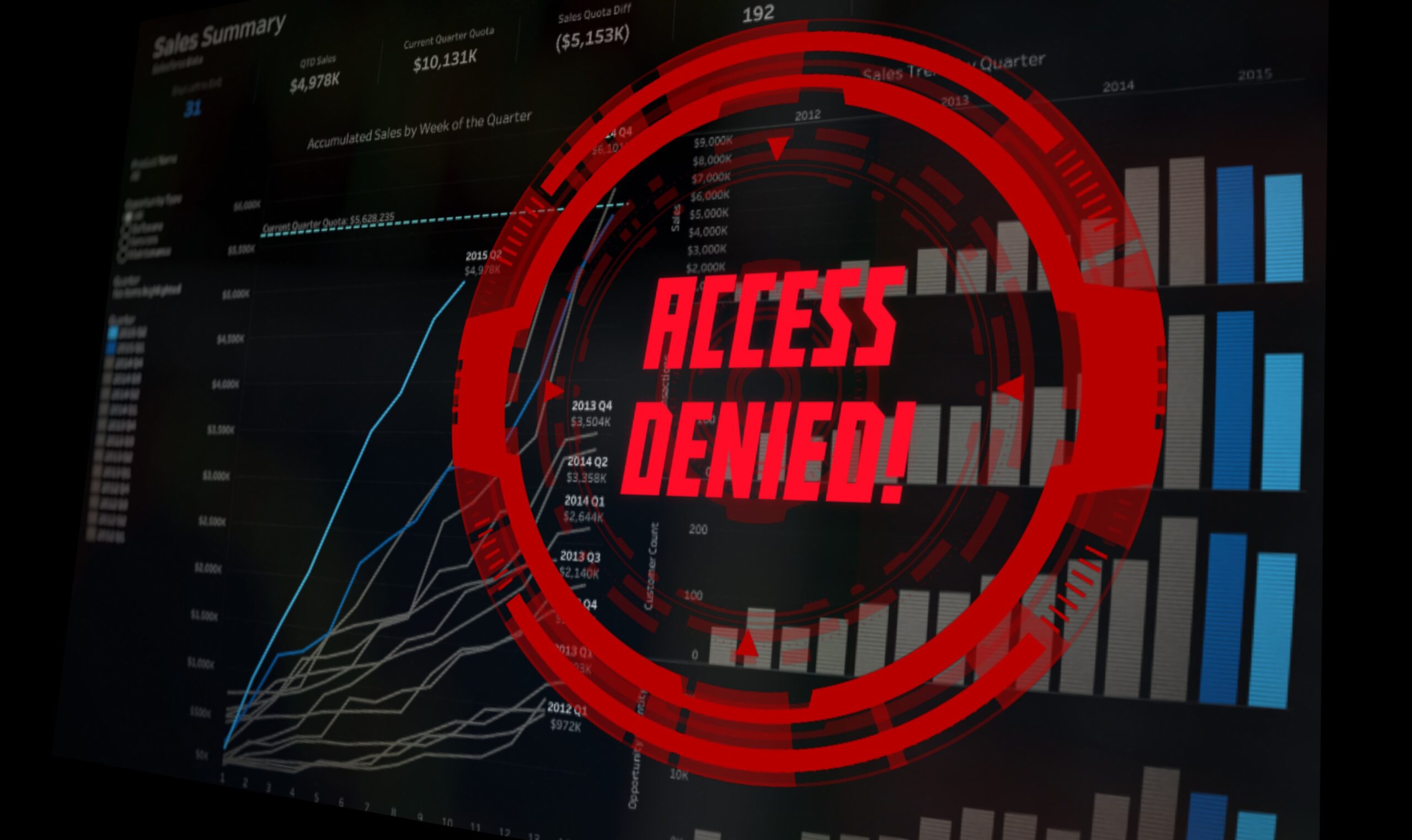PublicTechnology talks to the departmental CDIO about her work to transform the working practices and service delivery of the UK tax authority, and why improving diversity starts with leaders who are self-aware
This interview also appears as the cover feature in the latest edition of PublicTechnology sister publication Civil Service World. Click here to access an e-book version.
Credit for all photopgraphy: Baldo Sciacca
To get an idea of the scale of HM Revenue and Customs’ transformation plan, consider that the 10 years that have been allotted for its delivery is 36 months longer than host cities are given to put together the summer Olympics – a feat of organisation that requires the construction of infrastructure to support several million visitors from more than 200 countries.
The project represents the biggest modernisation of the UK tax system in a generation and, according to the government, involves fundamentally changing the way the department works and the services it provides. This includes installing – and, in many cases, uprooting – HMRC’s 65,000 employees into 13 regional hubs across the country by 2025.
As building work on the new offices continues, the focus is on giving employees a working environment “designed to support digital, flexible ways of working”.
Technology is also at the heart of changing how HMRC delivers services, as the department implements a range of platforms to enable it to collect an annual tally of more than £600bn in tax revenue electronically.
Heading up these twin technology transformations – reimagining both the working lives of the department’s tens of thousands of employees and the way it serves citizens – is Jacky Wright, who joined HMRC in October 2017 as chief digital and information officer. She believes that if HMRC is to make good on its grand ambitions, it must conceive of those two strands as part of a singular mission, and address them simultaneously.
Think about what it takes to insource a whole organisation; you do not overnight create an organisation that is just ready to go. We still have an ecosystem where we have suppliers – and we’ll always have that. The challenge is, do you have the right mix?
“You have to,” Wright tells PublicTechnology. “Because we’re talking about transforming how we do what we do… In order for us to transform, you have to work with the right people, those people have to have the right capabilities, and we have to provide the tools and processes to enable them, so that we can transform the services we ultimately deliver to our customers and businesses.”
Wright, who grew up in Tottenham but has spent much of her working life in the US, joined government from her previous role as a corporate vice president at Microsoft, based at the tech giant’s headquarters near Seattle. Before this, she held senior roles at a number of other multinational companies, including BP, General Electric, and Andersen Consulting.
She arrived at HMRC at a time when improving digital skills and technology infrastructure was especially important: the Aspire IT contract – the department’s long-running (and controversial) outsourcing deal with suppliers Capgemini, Fujitsu, and Accenture – finally reached its conclusion the same year that Wright became CDIO. The contract covered the supply of a comprehensive range of IT products and services, including computing and network infrastructure, and maintenance and support services.
Over its 13-year timeframe, Aspire was worth in excess of £10bn to the three suppliers. The second half of its lifespan took place against a backdrop of the Cabinet Office’s drive to break up such monolithic contracts and replace them with smaller, more SME-friendly engagements.
13
Number of regional hubs where HMRC employees will be based
65,000
The department’s approximate number of employees
10 years
Length of time allotted for delivery of transformation strategy
2020
Date by which government wishes to become the UK’s most inclusive employer
HMRC has previously estimated that its post-Aspire landscape could feature as many as 200 tech suppliers. Alongside this is a commitment to bring back in-house many services and functions that were for so many years outsourced.
“The Aspire project is gone – that’s done. And we have, to all intents and purposes, insourced,” Wright says. “But think about what it takes to insource a whole organisation; you do not overnight create an organisation that is just ready to go. We still have an ecosystem where we have suppliers – and we’ll always have that. The challenge is, do you have the right mix? And do you have the right capabilities in house? And so where we are right now, and what I have focused on, is deciding where you want core competencies internally versus externally.”
Where previous suppliers may have been seen as merely that – there simply to supply the department with kit – Wright is determined that the commercial engagements taking HMRC forward will be “true partnerships”.
“There’s a change in the expectations,” she says. “We want partners that help us to understand how we innovate more, to help us accelerate where we need to accelerate, and also to help with skill sets and infuse us with capability.”
She points to a recent programme she sponsored, conducted by government and industry body techUK in which civil service Fast Streamers worked with counterparts from similar schemes in the private sector. The two groups dedicated themselves to examining “government problems” and proposing solutions.
“That worked really well,” she says, adding the department must do more such programmes “as part of this insourcing that we’ve taken on board”.
Making Tax Digital
HMRC’s most visible service transformation is the £235m Making Tax Digital programme, which has encountered various criticisms and concerns since the rollout began in 2016.
Nevertheless, the implementation has proceeded steadily and, as of 1 April, all businesses with annual turnover above the £85,000 threshold must now file VAT returns using the digital system.
After some initial challenges, the platform is performing well, Wright says: “There were a few teething pains, but right now we are in a good place, and we can build on that.”
HMRC has promised that it will initially take a “light-touch approach” to enforcement, with penalties for non-compliance not to be sought as a matter of course. Mandatory use of MTD for income tax returns will be delayed until at least April 2021.
Between now and then, HMRC will work towards “setting out the ways we can improve and make it easier” for businesses to use, Wright says.
“It is about making sure that we think through all of the aspects of rolling out digital services, and a key part is how we socialise them – being clear on how the service works, and that it is consumable by everyone.”
Asked how she has found the digital awareness and skills of government compared with the private sector, Wright first says that “it’s not a fair comparison” for an entity as vast and diverse as government – nor a private sector that encompasses “high-tech organisations, old manufacturing organisations” and everything in between.
That said, she acknowledges that government’s growing digital, data and technology (DDaT) profession needs to do more to educate civil servants on the benefits of new tools and ways of working.
“I would say we need to do a better job of equipping our people and making sure that they understand how technology can be used to enable them to do what they need to do,” she says. “We’re also deep seated in bureaucracy and policies that may not necessarily be fit for purpose. And because of that, our ability to adopt and consume our technologies in an agile way isn’t always feasible.”
A key part of moving past these inhibitions is ensuring that the DDaT profession works more closely with policy and operations professionals.
And the impetus to make this collaboration happen does not just come from the top down, the CDIO says. Civil servants designing policy – and those creating the technology used to deliver it – must better understand each other’s needs.
Wright says: “The policy organisation is responsible for working with every other part of the organisation – including mine – to understand how policy gets implemented… what does it cost, how do we campaign, how do we work with our intermediaries, our agents, our software developers to implement that policy – and what are the inhibitors?
“Every stage of the implementation requires a digital element. So digital and IT becomes the axle by which things get done. For me and my team, we have to have the necessary skill sets in every one of those areas to be able to understand and translate and enable each one of those areas from a digital perspective.”In coordinating such an effort across an organisation as vast as HMRC, is Wright’s leadership approach more strategic, or hands-on?
[Inclusion] starts with the leaders. I have to know whether I have inherent biases in who I attract, who I hire, who I bring through, and who I encourage to work with me and for me. Each one of us has to do that… If every leader in this organisation were self-aware, then by the nature [of that], we would have a more inclusive environment.
“I characterise myself as a coach and a helicopter mum,” she says with a smile. The “coach” part of the equation, she goes on to explain, involves providing her people with the “the goal line” and giving them “the idea of where we want to go”.
She is there to help her staff along the way – “if they have issues, they’re able to come to me” – but also wants to give them the platform to be able to do their jobs properly.
“And then I empower. Trust, empower, and give them accountability,” she says. “And then I’m the helicopter mum, as I put it. Where I need to drill down with precision, […] where something is going into crisis or needs to be corrected, my role is to make sure that I’m focused and I help course-correct. I help understand with detail so that I can help people know where they need to go and redirect them accordingly.”
Diversity, inclusion, and respect
In a GOV.UK blogpost published in early November 2018 to mark the end of Black History Month, Wright wrote that: “As the daughter of a Windrush immigrant and a native of north London, I might not fit into the small box of what some people think of as a typical civil servant – but I am helping to change that.”
The government has pledged to become “the UK’s most inclusive employer” by 2020, but there is still some way to go to achieve this – as evidenced by a conversation Wright had the day before we meet.
“I was talking to a group of people and I mentioned that I was going to be in this magazine (Civil Service World). The response I got was: ‘We don’t remember ever having someone like you that we could read about in the magazine.’
“So, what does that tell you? It tells me we have work to do.
“That starts with the leaders. I have to know whether I have inherent biases in who I attract, who I hire, who I bring through, and who I encourage to work with me and for me. Each one of us has to do that. And, so the question I would put to you is, do you believe the civil service has created the framework by which we do that? If every leader in this organisation were self-aware, then by the nature [of that], we would have a more inclusive environment – because people would know. The fact that we don’t says that we, the leaders, have work to do to make sure that we are overcoming those barriers.”
Becoming a more diverse environment is not just about making government a better workplace, says Wright – who, since arriving at HMRC, has sat alongside 14 other senior civil service managers on government’s Diverse Leadership Taskforce, and has also worked with the Civil Service Ethnic Diversity Programme and Civil Service Race Networks. It is also about enabling government to work better: you can more effectively serve the breadth of the citizenry if your workforce is composed of a similarly broad cross-section, she says.
Data sharing and governance
Wright says that, while data sharing is currently taking place across Whitehall, such work is still “in the early stages”.
To support its expansion, HMRC is working with other departments to help develop the necessary frameworks, and try and ensure that citizens are not required to provide the same piece of information to multiple government entities.
The tax agency has also established a data governance group with senior representatives from across the department.
Wright believes that HMRC could, ultimately, use data in a way that allows it to better support citizens by anticipating their needs.
“We know the journey of a citizen from when they are born, through to when they turn 16 and get National Insurance, when they start their first job – and whether it is with an SME or a large business,” she says.
“We want to really understand customers’ journeys so there is a seamless experience where we know about every life event and we can anticipate the services it requires.”
For her part, Wright says that she wants her team to develop a culture which is more inclusive, collaborative, and dedicated to solving problems. The trait she values more than any other is “curiosity”.
“I want my team to be an inclusive team from all walks of life, because then we can best address problems,” she says. “[Diversity] informs me like it should inform anything that anyone does… We’ve got to understand the citizens, because we have to make sure they are able to interact with us – no matter who they are, what walks of life they are from, or whether they have disabilities. And, in order to do that, I’ve got to think broadly.”
In February, HMRC published the Respect at Work Review, a 60-page report in which former John Lewis personnel director Laura Whyte revealed her findings from an in-depth study of the department’s workplace culture.
Amid the 1,400 contributions made by civil servants were a number of stories that likely made uncomfortable reading for the department’s senior managers.
Whyte concluded that “many of the processes that should support respect at work require urgent improvement”.
This includes the procedure for reporting grievances – the report was unable to find a single HMRC employee “who had confidence in the grievance process”.
£235m
Cost of delivering the Making Tax Digital Programme
1 April 2019
Date from which VAT returns must be filed using the Making Tax Digital platform
13 years
Length of HMRC’s Aspire engagement with IT suppliers Fujitsu, Capgemini and Accenture
£10bn
Approximate worth of the Aspire contract over its lifetime
Overall, the department is pockmarked by instances “of both ‘abusive’ and ‘abrasive’ behaviour” towards employees, Whyte concluded, and “HMRC does not have a systematic and data-driven approach to the management of people”.
Wright says that work is well underway to address the problems identified by the review. Moreover, the publication of its findings in the first place should also be recognised as progress.
“Let me start by saying that being transparent is a good thing. It enables folks to see that we are taking this seriously – and we’re not hiding anything,” she says. “It also enables employees to have a narrative and feel that we are actually paying attention here. And so now they can speak up and help be a part of changing the culture.”
Since the publication of the report, HMRC’s DDaT employees have undertaken training focused on empathy and the impact of micro-behaviours: small, often unthinking, actions that have an unintended adverse impact on others.
This training has been particularly important for senior managers, Wright says.

“Micro-behaviour training is about understanding, and the empathy training is about having a heightened awareness of when something’s not right. You can tease out what it is that’s really causing problems, and then create the environment where people can speak up and where the processes [for doing so] are not onerous… We’re focused on helping people become more self-aware, and then creating an environment where we are visibly rooting out, and not accepting – not tolerating – bad behaviour.”
In addition to these efforts to make the department a more open and empathetic workplace, Wright also feels strongly about dispelling any misconceptions in the wider IT sector that Whitehall is not a suitable destination for career technologists seeking to experience life on the bleeding edge of innovation.
She is keen to promote wider understanding of what she believes are the great opportunities the civil service can offer digital professionals. “From a career perspective, government is a great place,” she says. “People do not always recognise the breadth, depth and quality of things you can do – and in a culture where people feel included.”
Upon joining HMRC, the scale and sophistication of the work at hand was a surprise even to her, Wright says.
“What surprised me is, when we look at HMRC, it is as large as any FTSE company. Then there’s the nature of what we do, the breadth of what we do – everything from taxes to customs and trade – and the impact that we have in society.”
Wright joined HMRC in October 2017 on a two-year contract. PublicTechnology suggests, with apologies for a slightly cheeky question, that it sounds like she might like to stay in government for the longer term.
“You’re right,” she says. “That is a cheeky question.”



